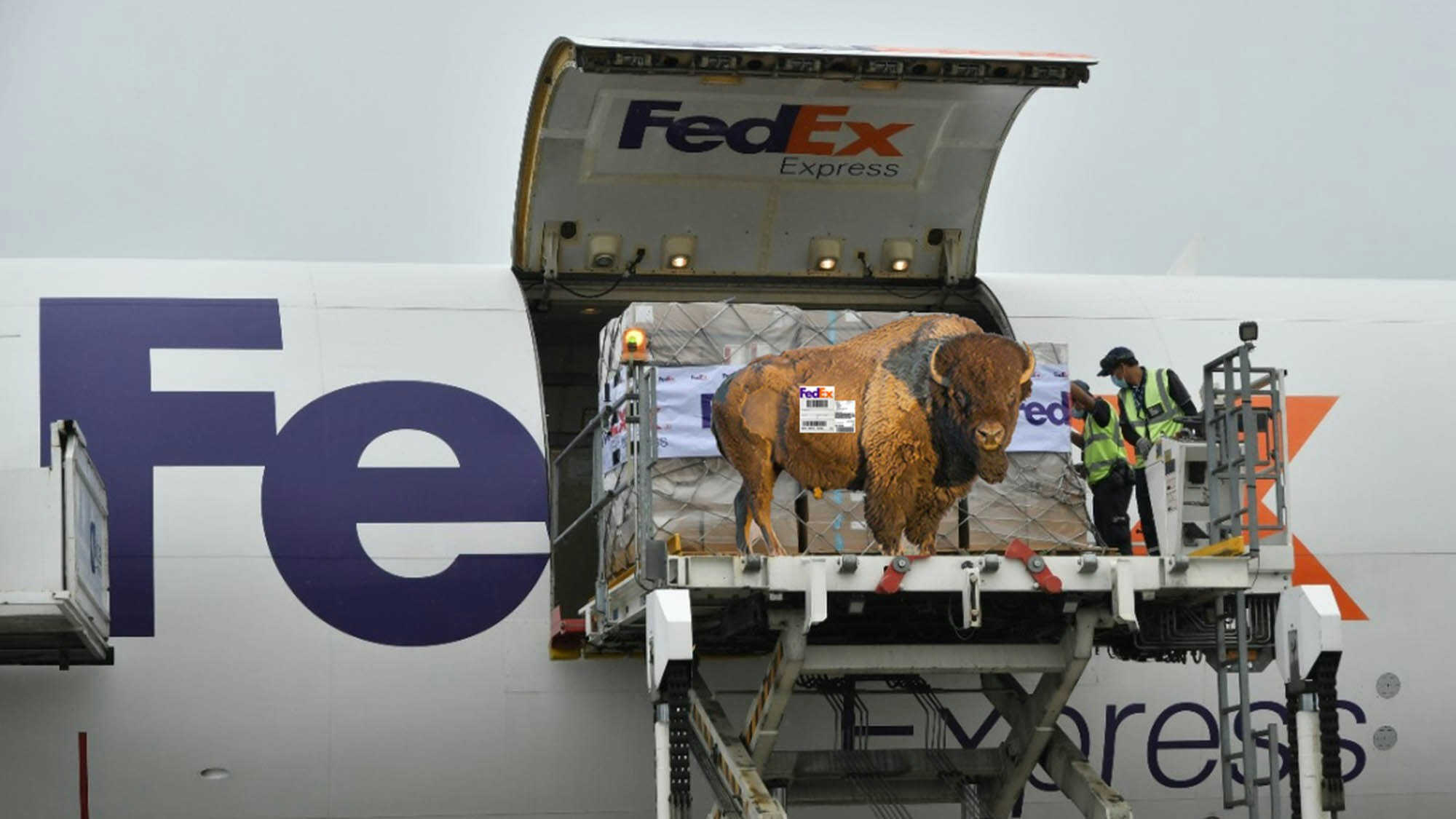One of the many priorities for Yellowstone National Park administrators is the repopulation of healthy, genetically pure bison herds across the United States.
And when bison from America’s first national park are sent to Native American tribes throughout the country, the animals absolutely, positively have to get there — well, maybe not overnight, but quickly.
So it’s no big surprise a nationally known shipping company was called in to help.
The park is sending bison to tribes across the country so they can begin their own bison herds to honor the culture of the tribes.
“Bison are really important culturally and historically to the tribes,” said Yellowstone Superintendent Cam Sholly. “The genetics of the Yellowstone bison are very pure, and so it’s been fantastic to get the Yellowstone bison on to 19 different tribal lands.”
But when a tribe from Alaska requested bison from Yellowstone last fall, the tribe’s preferred method of shipping was… unusual.
“They actually drove the three bison from Fort Peck (Montana) all the way to Seattle,” Sholly told Cowboy State Daily, “and then put them in a FedEx crate. And obviously they were configured so the bison were comfortable, and then put them onto a plane and flew the bison up to Alaska.”


Sholly said from the airport, the three bison were transferred to a barge, where they floated to the tribe’s island community.
“I understand the bill was like $50,000,” he said. “The government didn’t pay for it, it was tribes and philanthropy and some other ways of paying for that.”
Federal Express declined to be interviewed for this story.
The export of Yellowstone bison to tribes across the country is an ecological triumph.
Yellowstone is the only place in the lower 48 states to have a continuously free-ranging bison population since prehistoric times. However, as of 120 years ago, there were only around two dozen bison left in Yellowstone National Park due to decades of hunting and poaching.
Since 1902, however, Park officials have made a dedicated effort to rebuild the herd. As of the summer of 2021, there were a total of about 5,450 bison in the two primary Yellowstone herds (northern and central).
Park managers have been so successful in repopulating the species that they now face the challenge of managing the migratory bison that frequently roam beyond the park’s borders and onto private land, as well as land managed by other federal agencies.
Save The Bison
In an effort to keep the herds at a controllable number, the Interagency Bison Management Plan (IBMP) was established in 2000. The eight groups involved in the plan, who play a role in making decisions about Yellowstone bison, include tribal nations.
“Tribes were here for 10,000-plus years before Yellowstone ever became a Park,” Sholly pointed out, stressing the importance of including Native Americans in the conversation regarding the Park’s bison herd.
One of the goals of the IBMP is to reduce the number of bison that are consigned to slaughter every year, Sholly noted.
So rather than send the animals off to be butchered, the federal government, state of Montana and the Assiniboine and Sioux tribes at Fort Peck created a program in which animals are held in a quarantine facility to ensure they are free of the contagious disease brucellosis.
“We’ve just put a $1 million into the expansion of our bison conservation transfer program, which puts live, disease-free bison on to tribal landscapes,” Sholly said. “We’ve transferred over 200 In the last two and a half years to Fort Peck, where the Assiniboine and Sioux are, in concert with the Intertribal buffalo Council. Those 200 bison have been transferred to 19 tribes across nine states, including Alaska.”
The first export of bison from Yellowstone occurred in 2019, when park officials moved 55 bison to the Fort Peck Reservation in Montana. Because Montana law prohibits the live transfer of Yellowstone bison to new areas unless they are first certified as brucellosis-free, the animals had been held at the quarantine facility for 17 months and had undergone rigorous testing for signs the disease that induces abortions in pregnant cattle, elk, and bison.
“We need to continue to reduce the potential for transmission of brucellosis to livestock,” Sholly said. “The bison we’ve transferred up to the Assiniboine and Sioux in Fort Peck have gone through the brucellosis protocol, so they’re deemed brucellosis free… and allowable to be transferred to the tribes.”





